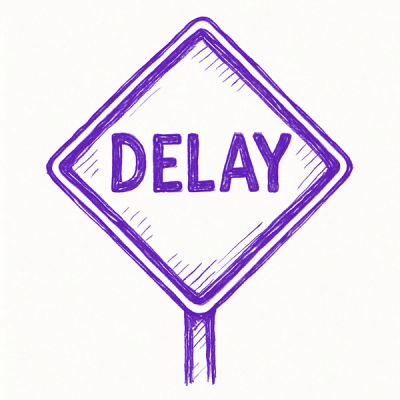
chartjs-node-canvas




A Node JS renderer for Chart.js using canvas.
Provides and alternative to chartjs-node that does not require jsdom (or the global variables that this requires) and allows chartJS as a peer dependency, so you can manage its version yourself.
Contents
Installation
npm i chartjs-node-canvas chart.js
Node JS version
This is limited by the upstream dependency canvas.
See the GitHub Actions yml section for the current supported Node version(s). You will need to do a npm rebuild to rebuild the canvas binaries.
Charts.JS version
Currently supports 4.x.x. You are given the ability to maintain the version yourself via peer dependency, but be aware that going above the specified version might result in errors.
Features
- Supports all Chart JS features and charts.
- No heavy DOM virtualization libraries, thanks to a pull request to chart.js allowing it to run natively on node, requiring only a Canvas API.
- Chart JS is a peer dependency, so you can bump and manage it yourself.
- Provides a callback with the global ChartJS variable, so you can use the Global Configuration.
- Uses (similar to) fresh-require for each instance of
ChartJSNodeCanvas, so you can mutate the ChartJS global variable separately within each instance.
- Support for custom fonts.
Limitations
Node Modules
I hope to convert this package to a node module in the future, but since it uses the CommonJS API to manage memory for ChartJS this is not a simple task. It it a top priority for the next major release.
Animations
Chart animation (and responsive resize) is disabled by this library. This is necessary since the animation API's required are not available in Node JS/canvas-node (this is not a browser environment after all).
This is the same as:
Chart.defaults.animation = false;
Chart.defaults.responsive = false;
*Note this is WIP, see the change log for most recent development.
SVG and PDF
For some unknown reason canvas requires use of the sync API's to use SVG's or PDF's. This libraries which support these are:
You also need to set the canvas type when you initialize the ChartJSNodeCanvas instance like the following:
const { ChartJSNodeCanvas } = require('chartjs-node-canvas');
const chartJSNodeCanvas = new ChartJSNodeCanvas({ type: 'svg', width: 800, height: 600 });
API
See the API docs.
Usage
const { ChartJSNodeCanvas } = require('chartjs-node-canvas');
const width = 400;
const height = 400;
const backgroundColour = 'white';
const chartJSNodeCanvas = new ChartJSNodeCanvas({ width, height, backgroundColour});
(async () => {
const configuration = {
...
};
const image = await chartJSNodeCanvas.renderToBuffer(configuration);
const dataUrl = await chartJSNodeCanvas.renderToDataURL(configuration);
const stream = chartJSNodeCanvas.renderToStream(configuration);
})();
Also see the example and the generated image.
Memory Management
Every instance of ChartJSNodeCanvas creates its own canvas. To ensure efficient memory and GC use make sure your implementation creates as few instances as possible and reuses them:
const smallChartJSNodeCanvas = new ChartJSNodeCanvas({ width: 400, height: 400 });
const bigCChartJSNodeCanvas = new ChartJSNodeCanvas({ width: 2000, height: 2000 });
exports = {
renderSmallChart: (configuration) => smallChartJSNodeCanvas.renderToBuffer(configuration),
renderBigChart: (configuration) => bigCChartJSNodeCanvas.renderToBuffer(configuration)
};
Custom Charts
Just use the ChartJS reference in the callback:
const chartJSNodeCanvas = new ChartJSNodeCanvas({ width, height, chartCallback: (ChartJS) => {
class MyType extends Chart.DatasetController {
}
Chart.register(MyType);
}
});
Global Config
Just use the ChartJS reference in the callback:
const chartJSNodeCanvas = new ChartJSNodeCanvas({ width, height, chartCallback: (ChartJS) => {
ChartJS.defaults.elements.line.borderWidth = 2;
} });
Custom Fonts
Just use the registerFont method:
const chartJSNodeCanvas = new ChartJSNodeCanvas({ width, height, chartCallback: (ChartJS) => {
ChartJS.global.defaultFontFamily = 'VTKS UNAMOUR';
} });
chartJSNodeCanvas.registerFont('./testData/VTKS UNAMOUR.ttf', { family: 'VTKS UNAMOUR' });
See the node-canvas docs and the chart js docs.
Windows
On windows you need to install the font first, before running your app. Otherwise you will get an error something like:
Pango-WARNING **: 11:13:09.211: couldn't load font "vtks unamour Not-Rotated 12px", falling back to "Sans Not-Rotated 12px", expect ugly output.
See here.
Background color
Due to the many issues and question this includes a convenience plugin to fill the otherwise transparent background. It uses the fillStyle canvas API;
const chartJSNodeCanvas = new ChartJSNodeCanvas({ width, height, backgroundColour: 'purple' });
Loading plugins
This library is designed to make loading plugins as simple as possible. For legacy plugins, you should just be able to add the module name to the appropriate array option and the library handles the rest.
The Chart.JS plugin API has changed over time and this requires compatibility options for the different ways plugins have been historically loaded. ChartJS Node Canvas has a plugin option with specifiers for the different ways supported plugin loading methods are handled. If you are not sure about your plugin, just try the different ones until your plugin loads:
Newer plugins
Let ChartJSNodeCanvas manage the lifecycle of the plugin itself, each instance will have a separate instance of the plugin:
const chartJSNodeCanvas = new ChartJSNodeCanvas({ width, height, plugins: {
modern: ['chartjs-plugin-annotation']
} });
You want to share the plugin instance, this may cause unwanted issues, use at own risk:
const chartJSNodeCanvas = new ChartJSNodeCanvas({ width, height, plugins: {
modern: [require('chartjs-plugin-annotation')]
} });
Older plugins
- Plugin that expects a global Chart variable.
const chartJSNodeCanvas = new ChartJSNodeCanvas({ width, height, plugins: {
requireChartJSLegacy: ['<some plugin>']
}});
- Plugins that
require ChartJS themselves.
const chartJSNodeCanvas = new ChartJSNodeCanvas({ width, height, plugins: {
globalVariableLegacy: ['chartjs-plugin-crosshair']
} });
- Register plugin directly with ChartJS:
const chartJSNodeCanvas = new ChartJSNodeCanvas({ width, height, plugins: {
requireLegacy: ['chartjs-plugin-datalabels']
} });
These approaches can be combined also:
const chartJSNodeCanvas = new ChartJSNodeCanvas({ width, height, plugins: {
modern: ['chartjs-plugin-annotation'],
requireLegacy: ['chartjs-plugin-datalabels']
} });
See the tests for some examples.
Known Issues
There is a problem with persisting config objects between render calls, see this issue for details and workarounds.
@athombv at https://homey.app
5.0.0
Migrated to support chart.js v4.x.x, dropped support for 3.x.x
Upgraded to canvas v3.x.x
WIP support for animated charts, exporting to GIF.





